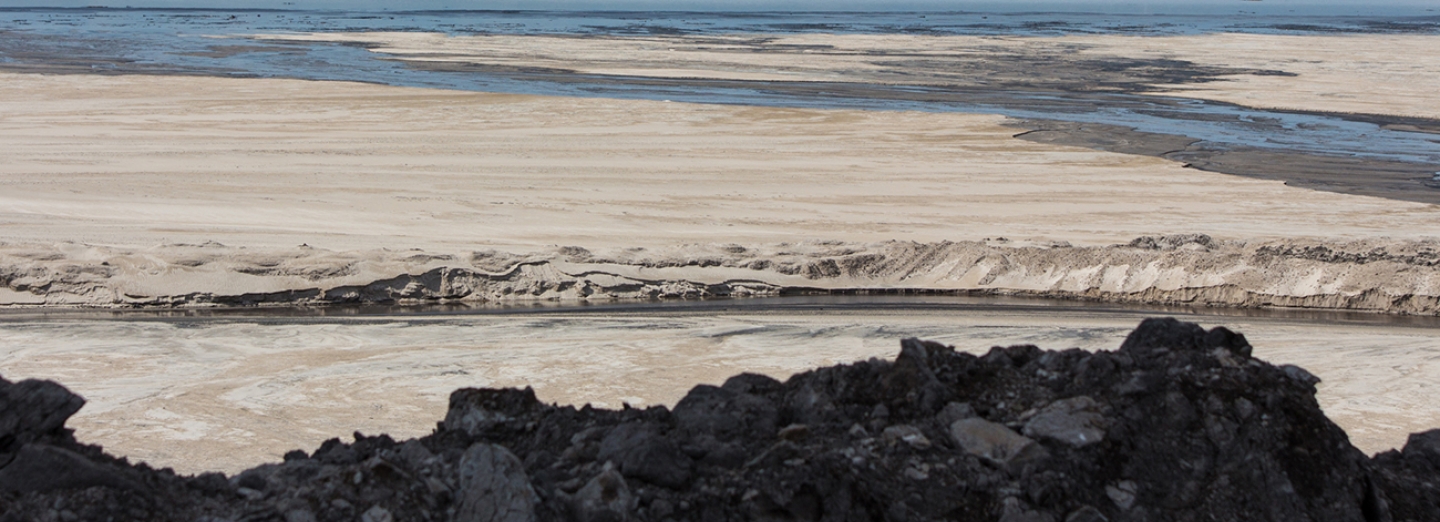Here in Alberta, many mines remove oil sands deposits in order to recover bitumen—but oil sands can’t be mined without producing waste products known as tailings. Tailings pose a significant problem to the environment and public safety. It takes decades to remove them from the landscape.
Over the last 40 years, we’ve worked with industry leaders, government, and universities to shorten the time it takes to restore the land disrupted by tailings waste. We’ve made some progress, but there is still work to do.
What are tailings?
In oil sands mining, tailings are what remain after the oil has been removed from the ore that was mined out of the ground. Tailings are made of sand, silt, clay, water, and some residual bitumen.
How Tailings Are Stored
Companies store tailings in human-made tailings ponds, which they surround with monitoring systems. Once tailings are in the pond, most tailings components quickly separate from the water. The water can be recycled to support operations.
However, smaller particles of clay and silt will remain in suspension. These eventually form fluid tailings. Fluid tailings can take decades to settle, and even then only to a consistency of soft mud.

Our Detailed Requirements
Under Directive 085: Fluid Tailings Management for Oil Sands Mining Projects, companies must submit a tailings management plan for our approval. We conduct a thorough technical review of these plans.
To hold companies accountable, our approach
- considers a project’s effects on the environment, including the air, land, water, and the ecosystem;
- evaluates company performance on a yearly basis;
- includes regular inspections and audits;
- manages both new and existing tailings;
- provides clarity and certainty to stakeholders; and
- requires progressive reclamation.
If you have questions about our requirements or would like to provide feedback, please email TailingsDirective@aer.ca.
Stakeholder Involvement
To develop Directive 085, we worked with a multistakeholder committee consisting of industry, First Nations, Métis, the Municipality of Wood Buffalo, and environmental organizations. This was the first time we worked with multiple stakeholders to develop requirements, and we’ll continue to work with this committee to address tailings growth.
To further our review of a company’s tailings management plan, we may hold meetings with the company and stakeholders to discuss the application and related concerns. We call this an “enhanced review.”
We share stakeholder feedback in our Tailings Regulatory Management Initiative - Engagement Summary [PDF].
Tailings Management Framework
In March 2015, the Government of Alberta released the Lower Athabasca Region: Tailings Management Framework for Mineable Athabasca Oil Sands (TMF). The framework says that all fluid tailings should be ready to reclaim within ten years of the end of a mine’s life. We used the TMF to create Directive 085.
Learn more about the TMF and how it helps us improve tailings management.
Compliance and Enforcement
We conduct regular inspections and audits to make sure that companies are following our requirements. If we find that a company isn’t complying, we’ll take the appropriate compliance and enforcement actions and share our findings on the Compliance Dashboard.


